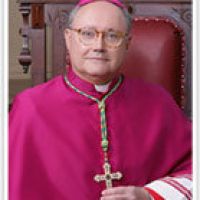Again I hope during my lifetime this is a case where we see the "older influence the newer" as to the liturgy. Father Z has an excellent piece called WDTPRS: Laetare Sunday . This is of course still significant in the Extraordinary Form of Mass.
If it has any influence on the Post Vatican II liturgy I am not aware of it because this is the first time in my Catholic life I have heard of this. Again I am wondering why did we "ditch this" and for what purpose? I think again it is a prime example of how the Church Calender is not only great for prayer life but also , contrary to the views of the peanut gallery, not rigid but well suited to the needs of human life.
Here are some excerpts from Father Z's post:
Today is known by the first word of the first chant of Mass, the Introit, in this case, “Laetare … Rejoice”! This is one of two days of the year we use rose (rosacea) colored vestments and the only day during Lent when we can use instrumental music. On Laetare Sunday we momentarily relax the penitential character of Lenten Sundays......
The tradition of rosacea vestments grows from the history of the Roman Stations. The Station church today is the Basilica of the Holy Cross of Jerusalem, where the Emperor Constantine’s mother St. Helena placed relics of Cross and Passion brought back to Rome from Jerusalem. At this basilica on this day, Popes blessed roses made of gold to be sent to Catholic monarchs and distinguished sons and daughters of Holy Mother Church. Therefore Laetare was also nicknamed Dominica de rosa.... Sunday of the Rose...
According to very ancient Roman tradition, serious penance and fasting did not begin until Monday of the third week before Easter (the day after this Sunday). Thus, Laetare was the last day before the period of strict discipline. It was not until later that Lent was lengthened to forty days, making a Tuesday into “Mardi Gras” literally in French “Fat Tuesday”, the day people had to use up the animal fats in their houses. Laetare is therefore a refreshment stop on the pilgrimage toward Easter: think of water-stations along the route of a Marathon race. Together with the joy of approaching Easter, this Sunday is about the heavenly Jerusalem we long for, which is anticipated in the Church and the Most Holy Eucharist. Moses is also an important figure in today’s Mass. He obtained manna from God for the People in the wilderness on their journey to the Promised Land. Eucharist and journey. Joy and Jerusalem. ......
Much more history and reasons for the day at the link.
Sunday, March 2, 2008
What is Laetare Sunday ?
Posted by
James H
at
3/02/2008 03:01:00 PM
![]()
Labels: Catholic, Latin Mass, lent, Liturgy
Subscribe to:
Post Comments (Atom)















No comments:
Post a Comment